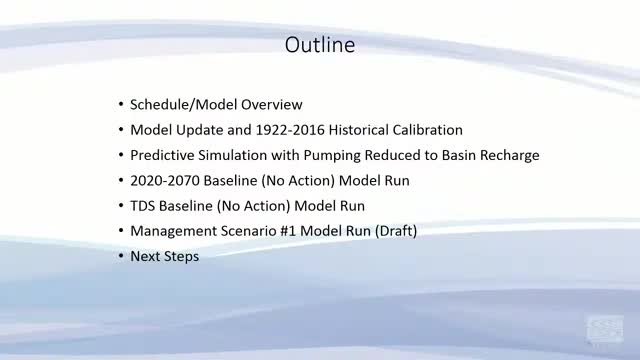Desert Research Institute advances Indian Wells Valley groundwater model for sustainable management
April 18, 2025 | Ridgecrest, Kern County, California
Thanks to Scribe from Workplace AI and Family Portal , all articles about California are free for you to enjoy throughout 2025!

This article was created by AI using a video recording of the meeting. It summarizes the key points discussed, but for full details and context, please refer to the video of the full meeting. Link to Full Meeting
The primary discussion centered around a predictive simulation that estimates an annual recharge of approximately 7,650 acre-feet. This figure serves as a baseline for comparing various management scenarios over the next 50 years. The modeling group has completed a draft of the first management scenario, which was recently presented to the Technical Advisory Committee (TAC). The agency has contracted the Desert Research Institute (DRI) to conduct the technical modeling work, with oversight from the water resource manager and the TAC.
A key aspect of the meeting was the introduction of a hydrogeologic conceptual model that illustrates how water moves through the Indian Wells Valley system. This model integrates various components, including groundwater levels, recharge rates, and the impact of pumping on water storage. The model's calibration is based on historical data, allowing for projections that account for seasonal variations and potential future conditions.
The meeting also addressed the implications of land subsidence and total dissolved solids (TDS) in groundwater quality. The agency is committed to analyzing these factors to ensure that water quality remains within acceptable limits as groundwater extraction continues. The TDS levels, which indicate the salinity of the water, are critical for assessing the long-term viability of the groundwater supply.
As the agency moves forward, the timeline for completing the management scenarios is set for April, with ongoing discussions about incorporating recycled and imported water into the groundwater supply. The results of the modeling efforts will play a pivotal role in shaping the Groundwater Sustainability Plan (GSP), which aims to establish measurable objectives for sustainable water management.
In conclusion, the IWV GSA's meeting underscored the importance of data-driven decision-making in managing the region's groundwater resources. The agency's proactive approach to modeling and analysis reflects a commitment to sustainability, ensuring that the Indian Wells Valley can meet its water needs while preserving the quality and availability of this vital resource for future generations.
Converted from IWV GSA Meeting - 02/21/2019 meeting on April 18, 2025
Link to Full Meeting
Comments
View full meeting
This article is based on a recent meeting—watch the full video and explore the complete transcript for deeper insights into the discussion.
View full meeting